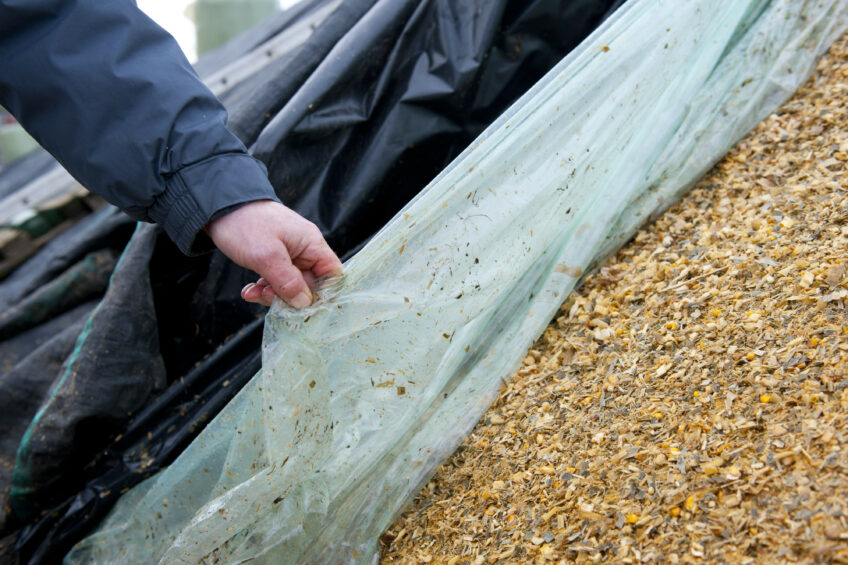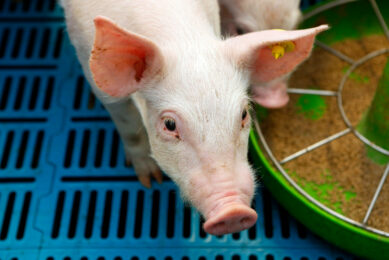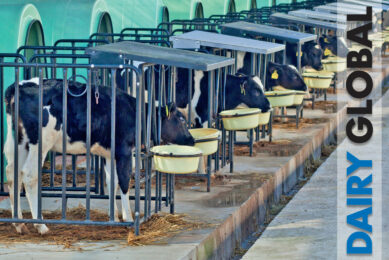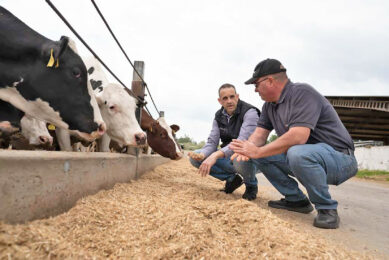Preserving the benefits of a good TMR

Feeding TMR instead of separate silage and grain has several benefits and is a good choice to increase the milk production or daily growth and thus to increase your earnings.
All around the world the size of dairy and beef cattle farms is increasing to stay competitive on the global market. The farmer has to focus on optimising the resources on the farm such as feed, labour and machinery to produce in the most efficient way. As you take a closer look at feed, you see a growing popularity of Total Mixed Rations (TMR) by large farmers. With TMR the farmer is ensured that cows sustain a high dry matter intake with the perfect mix of nutrients in every bite. TMR is a mix that contains everything that cattle needs.

Cows can detect the slightest difference in their feed
It is common knowledge that feed intake declines as the temperature of the feed rises. The temperature rises because a lot of air is mixed in and unwanted micro-organisms, yeasts and moulds can grow. It is important to be sure that the mix will be fresh over the total feeding period. The freshness also depends on how often you mix a new mix. When you mix a total mixed ration you add oxygen to the feed. The growth of micro-organisms is promoted, which transforms a palatable feed to a less palatable one with reduced consumption and in the end results in less milk or lower daily growth. Cows can easily detect a rise in temperature. A cow has around 25,000 taste buds, a human only has 10,000 taste buds. So they are able to taste the slightest differences in their diet. Cows have so many taste buds because they need to be able to tell if a specific plant contains dangerous toxins or not. So when the amount of micro-organism are growing you’ll notice a reduced feed intake and a resulting decline in performance.
Organic acids in the feed mix
Both forages and by-products contain nutrients that favour the growth of specific microbes (yeast, fungi and bacteria). If you want to preserve the nutritional value of the TMR, you have to add organic acids to the feed. Adding specific organic acids blends, such as formic acid and/or propionic acid to the mix prevents bacteria, moulds and yeasts from growing. Formic acid prevents clostridia from growing and creates spores and has a high bacterial efficacy at low pH, which is especially suitable in TMR. It also has nutritional effects. Formic acid denatures plant proteolytic enzymes, which increases protein quality and palatability. Propionic acid has a fungicide effect. It penetrates the mould and yeast cells and destroys them. It also binds to membrane enzymes, denatures them or causes competitive inhibition. Sodium formate and sodium propionate are called the salts of organic acids. Sodium formate (salt of Formic acid) makes the product more gentle to skin and metal and has a high bacterial efficacy at low pH, which is especially suitable in TMR. Sodium propionate (salt of Propionic acid) also makes the product more gentle to skin and metal and has a fungicide effect.
Which organic acids are the most effective is influenced heavily by the raw materials used and their part of the total TMR. An additional benefit of using organic acids in TMR is the increased attractiveness of the TMR for the cows. You can compare it with the dressing on a salad. Organic acids give a fresh taste to the mix, which cows really like.
Figure 1 – Temperature changes of different treatments in a TMR mix*.

TMR composition is key
What the optimal solution is for your TMR, depends on its composition. The best solution for grass and maize silage is a blend dominated by propionic acid and/or sodium propionate to prevent the growth of moulds and yeasts. It is well known that pure propionic acid has a great preservative effect and is especially well suited for mould prevention. In TMR containing by-products, such as beet pulp, other microbes such as aerobic bacteria are involved in the heating formation. In this type of TMR, a combination of formic and propionic acid is very effective. Formic acid is very efficacious against aerobic bacteria. Because of all these variables and different feed compositions (feed based on grass silage, maize silage and by-products from the food industry), it is important that a farmer uses a product which is tailored to a specific TMR composition. Only then an optimal microbial protection can be established, which means it keeps the TMR cool during feeding, reduces the growth of unwanted bacteria, moulds and yeasts and increases the palatability of feed. And thus improves milk production and/or growth. Different trials with different TMR mixes and products show good results (Figure 1,2 and 3).
Figure 2 – Temperature changes of different treatments in a TMR mix*.

Figure 3 – The heating time in the TMR mix* is postponed when TMR treatment is used.

Positive feedback
Farmers show a growing interest in the TMR formulations. As more data are available, farmers get more specific and scientific with their TMR formulations and so will be the solutions available to preserve them.










